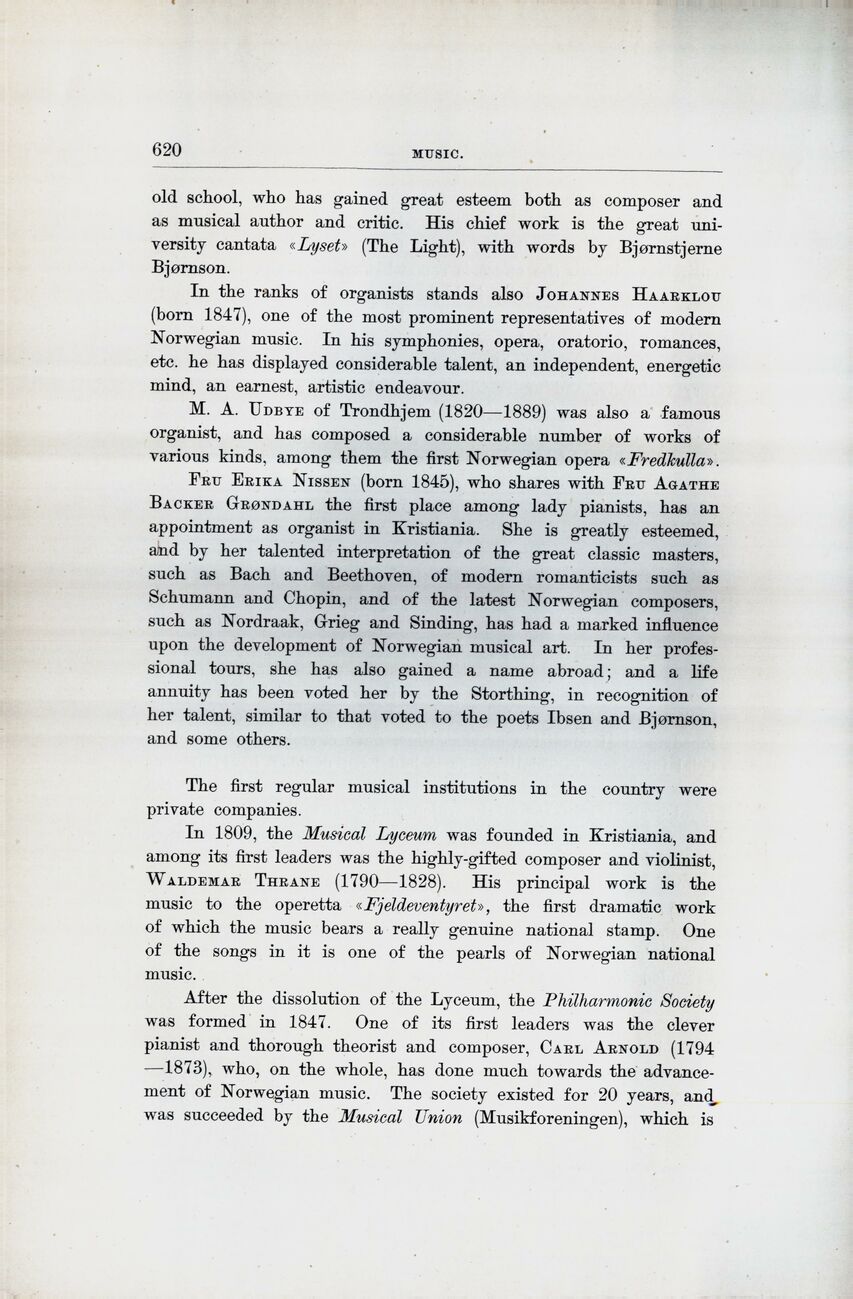
Full resolution (JPEG) - On this page / på denna sida - Music, by V. H. Siewers

<< prev. page << föreg. sida << >> nästa sida >> next page >>
Below is the raw OCR text
from the above scanned image.
Do you see an error? Proofread the page now!
Här nedan syns maskintolkade texten från faksimilbilden ovan.
Ser du något fel? Korrekturläs sidan nu!
This page has been proofread at least once.
(diff)
(history)
Denna sida har korrekturlästs minst en gång.
(skillnad)
(historik)
old school, who has gained great esteem both as composer and
as musical author and critic. His chief work is the great
university cantata «Lyset» (The Light), with words by Bjørnstjerne
Bjørnson.
In the ranks of organists stands also Johannes Haarklou
(born 1847), one of the most prominent representatives of modern
Norwegian music. In his symphonies, opera, oratorio, romances,
etc. he has displayed considerable talent, an independent, energetic
mind, an earnest, artistic endeavour.
M. A. Udbye of Trondhjem (1820—1889) was also a famous
organist, and has composed a considerable number of works of
various kinds, among them the first Norwegian opera «Fredkulla».
Fru Erika Nissen (born 1845), who shares with Fru Agathe
Backer Grøndahl the first place among lady pianists, has an
appointment as organist in Kristiania. She is greatly esteemed,
and by her talented interpretation of the great classic masters,
such as Bach and Beethoven, of modern romanticists such as
Schumann and Chopin, and of the latest Norwegian composers,
such as Nordraak, Grieg and Sinding, has had a marked influence
upon the development of Norwegian musical art. In her
professional tours, she has also gained a name abroad; and a life
annuity has been voted her by the Storthing, in recognition of
her talent, similar to that voted to the poets Ibsen and Bjørnson,
and some others.
The first regular musical institutions in the country were
private companies.
In 1809, the Musical Lyceum was founded in Kristiania, and
among its first leaders was the highly-gifted composer and violinist,
Waldemar Thrane (1790—1828). His principal work is the
music to the operetta «Fjeldeventyret», the first dramatic work
of which the music bears a really genuine national stamp. One
of the songs in it is one of the pearls of Norwegian national
music.
After the dissolution of the Lyceum, the Philharmonic Society
was formed in 1847. One of its first leaders was the clever
pianist and thorough theorist and composer, Carl Arnold
(1794—1873), who, on the whole, has done much towards the
advancement of Norwegian music. The society existed for 20 years, and
was succeeded by the Musical Union (Musikforeningen), which is
<< prev. page << föreg. sida << >> nästa sida >> next page >>